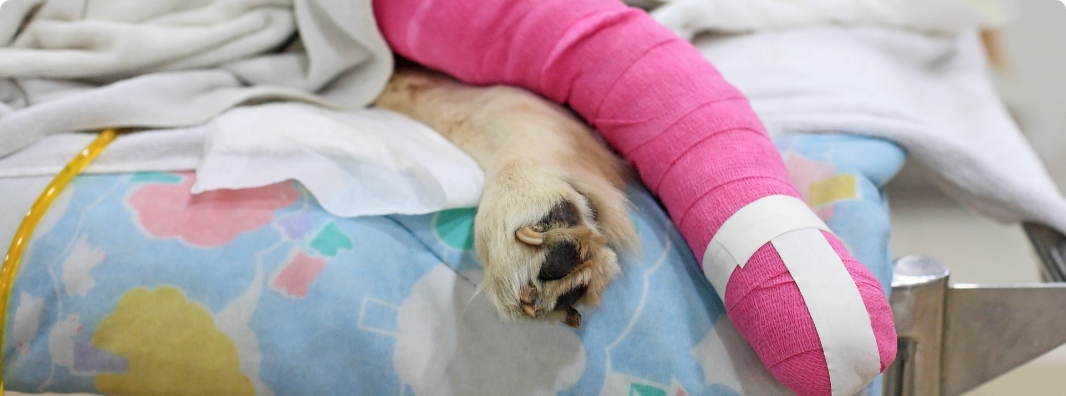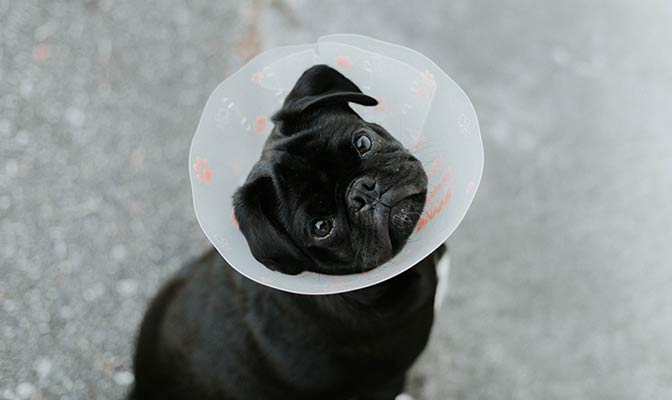Home | Medical Info | Helping Your Dog with Osteoarthritis
Helping Your Dog with Osteoarthritis
Keywords:
A diagnosis of osteoarthritis (OA) in your dog can feel devastating and even overwhelming. After all, we know that OA is a progressive, degenerative disease that will worsen over time. By most estimates, 20% of all dogs (regardless of age) are affected by OA, making it the most common chronic disease they face. Once a dog is diagnosed with OA, it is important to understand that our focus is management rather than cure. Success means maximizing your dog’s comfort and function while minimizing pain.
"Successfully managing your dog’s OA means maximizing comfort and function while minimizing pain."
The good news is that there are many strategies, both big and small, to help dogs live with their OA.
What is the first step I should take to help my dog with OA?
Create a true partnership with your veterinarian. This means scheduling regular evaluations to monitor the progression of OA and modify the treatment plan.
Featured Resources

We Welcome New Patients!
We're always happy to give your furry friend care at our hospital. Get in touch today!
Contact UsDedicate a journal or notebook to your dog’s ongoing health/medical issues, and write down all your questions as you think of them. Take your notebook to all veterinary visits to record answers to your questions as well as to note the details of any updated veterinary recommendations. We only recall about 10% of what we hear, so it makes sense to write things down.
Can my dog’s weight make a difference in managing OA?
Yes, it can. If your dog is carrying extra weight, work with your veterinarian to plan a weight-loss strategy to get your dog lean and keep him or her that way. Your veterinarian will prescribe a diet that will provide joint support and help your dog lose weight. Ask for specific portion recommendations, and schedule regular weigh-ins to monitor success.
Can exercise help?
With OA joints, we know that dogs need to “use it or lose it.” Regular moderate exercise contributes to better joint health, even in the face of OA. Ask your veterinarian for specific guidance on how far and long to walk, acceptable walking surfaces, and specific exercises that can target and strengthen muscle groups.
Is there anything I should know about the pain medications/nutraceuticals/supplements my veterinarian has prescribed for my dog?
Use all products strictly as instructed/labeled. Do not modify delivery/dosing of prescription medications except under the direction of your veterinarian. Be sure to ask for a written summary of potential side effects, and monitor your dog carefully. If you witness any adverse side effects from medications, contact your veterinarian immediately.
Are there any other veterinary management options I can look into?
You may want to explore physical medicine to complement medication, nutrition, and nutraceuticals to help your dog with OA. Physical medicine options include physical rehabilitation, acupuncture, chiropractic, and medical-massage. You want to work with appropriately qualified and credentialed individuals, so seek your veterinarian’s guidance for a referral. Physical medicine may allow for decreased doses of medication over time by helping to restore more normal biomechanics, movement, and strength in the dog’s body.

How can I modify my home environment to maximize my dog’s comfort and function?
There are some simple things you can do to make everyday living much more comfortable and fun for your dog with OA. Something as straightforward as providing raised food and water dishes can relieve low-back pain and make mealtimes more enjoyable. Dishes between your dog’s elbow and shoulder level are generally most convenient.
In addition, keep your dog with OA warm and dry. Outdoor living is, in general, not appropriate for these dogs. To make sleeping surfaces as comfortable as possible, consider providing your dog with an orthopedic or memory foam bed.
A ramp to enter and leave the vehicle makes car rides more enjoyable by eliminating stress on the back and leg joints. Dogs generally learn how to use ramps quickly.
Depending on the extent of your dog’s OA, it may be best to prevent access to stairs when no one is available to “spot” the dog on a trip upstairs or downstairs. A collapsible baby gate works great for this and can either be mounted on hinges or simply put up and removed as needed.
"An often-overlooked yet very important environmental modification is slip-free flooring. "
Finally, an often-overlooked yet very important environmental modification is slip-free flooring. In this age of hardwood, laminate, tile, and vinyl flooring, most dogs with OA are simply doomed to struggle just to get around the house. We can help them out in a number of ways:
Add area rugs with non-skid backing.
Using baby gates to prevent access to rooms with slick floors.
Laying down interlocking squares of lightly padded flooring (such as those used to create play surfaces for children). These squares work well for covering large floor surfaces because they can be custom-fitted to any room and easily removed for cleaning and entertaining company.
What is my takeaway message?
Work with your veterinarian to expand and fine-tune these options for your dog. With a bit of imagination and creative thought, you can help your dog with OA enjoy a long, happy, and comfortable life!
Contributors: Robin Downing, DVM, CVPP, DAAPM
Featured Resources

We Welcome New Patients!
We're always happy to give your furry friend care at our hospital. Get in touch today!
Contact UsTips and Advice From Our Team
Looking for advice about caring for your pet? Our blog features helpful tips and educational material from our team to support your needs.




